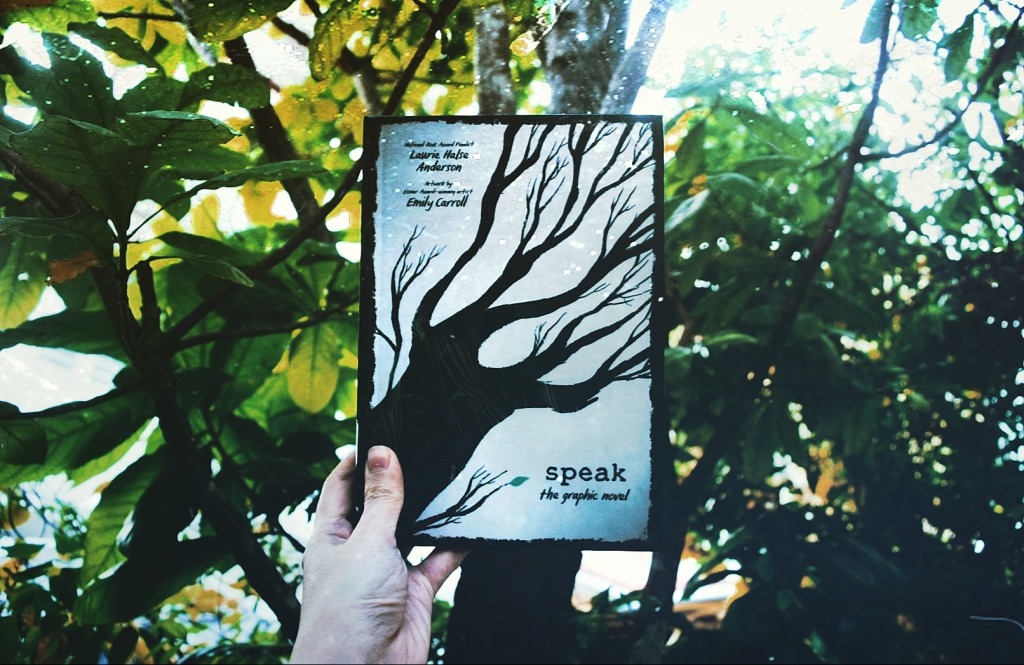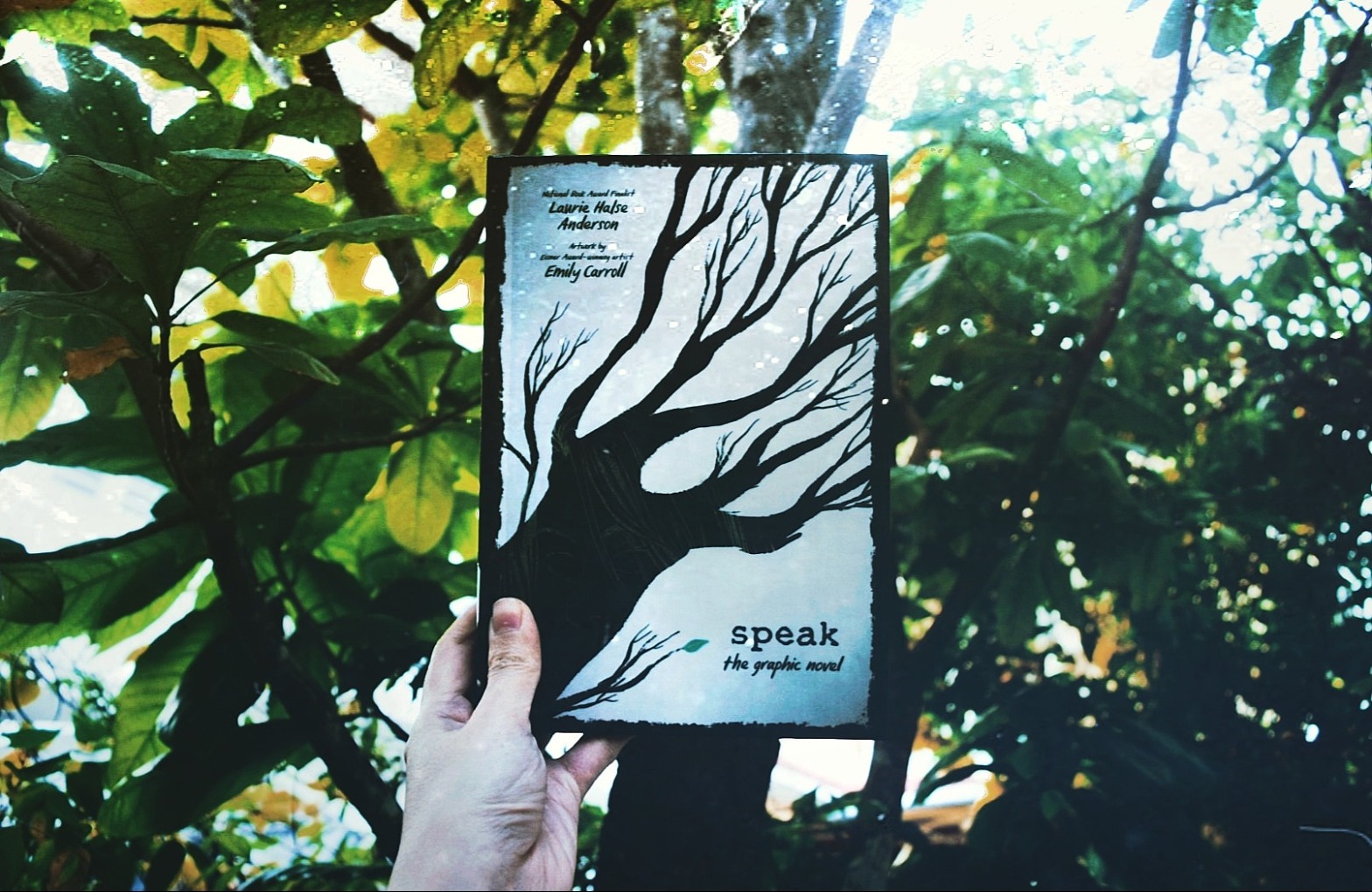I had read “Speak” the original novel before, and upon knowing that it would be adapted into a graphic novel, I was very looking forward to reading this version. The story of “Speak” really moved me the first time I read it, and it was so touching to experience this story again, this time with beautiful illustrations from the talented Emily Carroll, whom I have admired ever since reading the book “Through the Woods” by her.
“Speak” is the journey of Melinda – a rape survivor – to find her voice to speak up about what was done to her by her perpetrator, and to find a way to deal with the horror of what happened. This journey of hers was both painful and empowering, and I found myself feeling anxious and trapped just like what Melinda must have felt, seeing her struggling with finding her own voice back.
The pain that the rapist caused to Melinda and the memories of that hurtful night were forever engrained in her, burning away the skin of a Melinda before the rape, disconnecting her from her old self and her own body. The way Melinda described her current self, composed of newly grafting skin that felt alien to her, was so devastating to read:
“What does it feel like to walk in a new skin? I feel like my skin has been burned off. I stumble from thornbush to thornbush… My mother and father who hate each other, Rachel who hates me, a school that gags on me like I’m a hairball. I just need to hang on long enough for my new skin to graft.”

On her journey of finding her own voice back and healing herself, Melinda came into contact with Mr. Freeman – her Art teacher, the only one in her school who seemed to encourage her rather than to ostracize her. Mr. Freeman offered some very interesting insights into the human nature and the need for us to express ourselves, which were profoundly impactful:
“You’d be shocked at how many adults are already dead inside, walking around with no clue, waiting for a heart attack or cancer to finish the job.
When people don’t express themselves, they die one piece at a time. It’s the saddest thing I know.”
Coming to the English class, with the lesson about the symbolism of snow in “The Scarlet Letter” by Nathaniel Hawthorne, Melinda gradually realized what snow meant in the book as she reflected back to her silence, her inability to speak up, the quiet demeanor that had been following her ever since the rape. And I felt every single word she thought in her head, the way she made the comparison between her heart and the snow – a heartbreaking parallel that spoke volume to the trauma that she had to endure:
“Hawthorne wanted snow to symbolize cold. That’s what I think. Cold and silence. There is nothing quieter than snow. The sky screams to deliver it, a hundred banshees flying on the edge of the blizzard. But once snow covers the ground, it hushes as still as my heart.”
After everything Melinda had to go through, the book closes out with her final but important realization, which couldn’t be more powerful and at the same time hopeful. Finally, the coldness and silence in Melinda melted, and she stepped into the sunlight, embracing the release, power, and freedom that she was fighting to find all this time:
“IT happened. There is no avoiding it, no forgetting it. No running away, or flying, or burying, or hiding.
Andy Evans raped me in August. It wasn’t my fault. He hurt me. It wasn’t my fault. I’m not going to let it kill me. I can grow.
My tears are dissolving the last block of ice in my throat. The frozen stillness melts inside me. Shards of ice drip onto the floor and vanish in the puddle of sunlight.”
Final verdict: 10/10
